Archaeology & History
The Remains of a Renaissance Poet Emerge During Notre-Dame Restoration
Analysis revealed the person suffered from tuberculosis and meningitis.
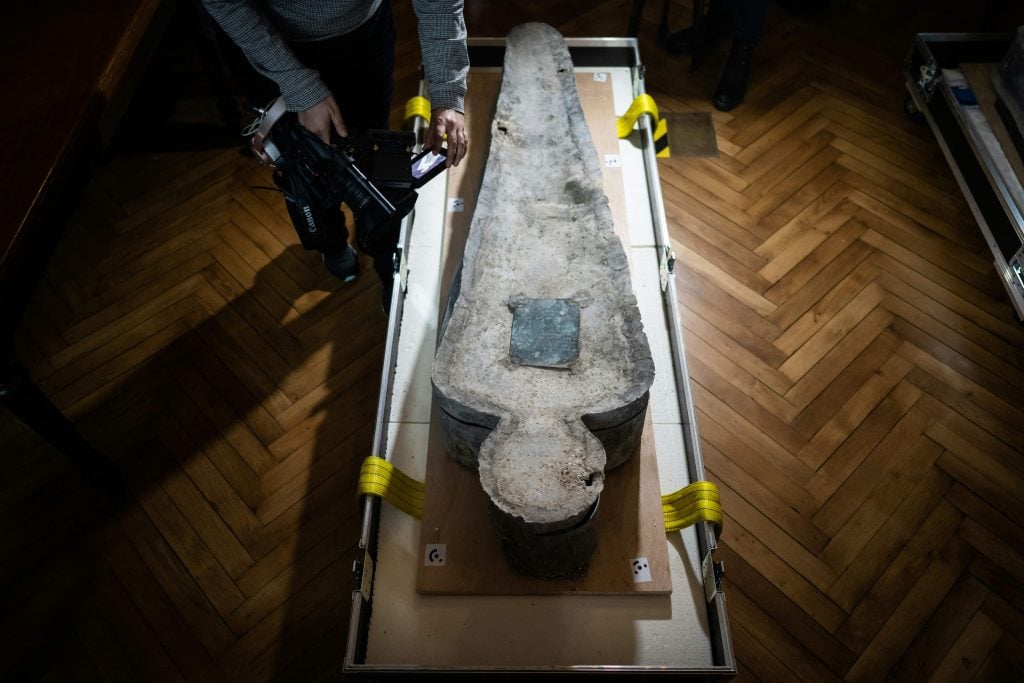
Analysis revealed the person suffered from tuberculosis and meningitis.

Richard Whiddington

Two years ago, archaeologists engaged in post-fire restoration work at Notre-Dame excavated a pair of lead sarcophagi beneath the transept.
The identity of one was made clear from the affixed plaque and epitaph. It belonged to Antoine de la Porte, a great patron of the arts and former canon of the Cathedral who died in 1710. The identity of the other was a mystery.
The remains were taken to a forensic lab at Paul Sabatier University, southwestern France, and researchers now believe the second sarcophagus probably belonged to Joachim du Bellay, a beloved 16th-century poet whose poems are still taught in French schools today.
The news was released by the National Institute of Preventive Archaeological Research (Inrap) on September 17 as part of a report on the organization’s work inside and outside of Notre-Dame five years on from the devastating fire.
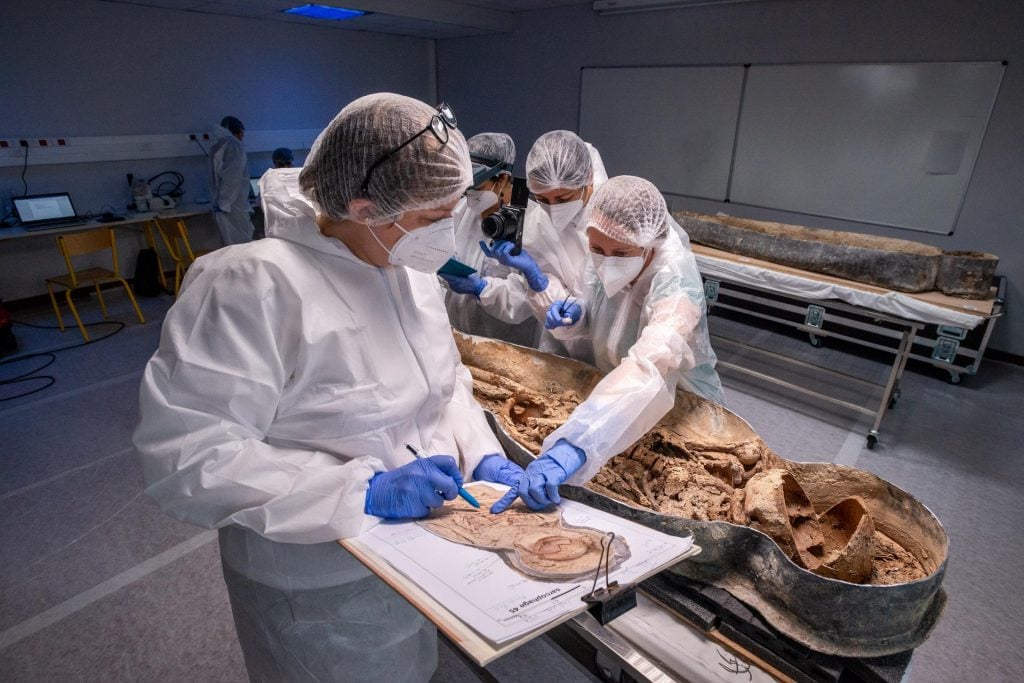
Analysis of the sarcophagus and skeleton now attributed to Joachim du Bellay. Photo: courtesy Denis Gliksman, Inrap.
It was long known that du Bellay had been buried at Notre-Dame. He had served as a minor clerical official at the Cathedral and was well-connected: Jean du Bellay, an uncle who had raised him, was a former bishop of Paris and had served as dean of the College of Cardinals in Rome. The location of his grave, however, was unknown.
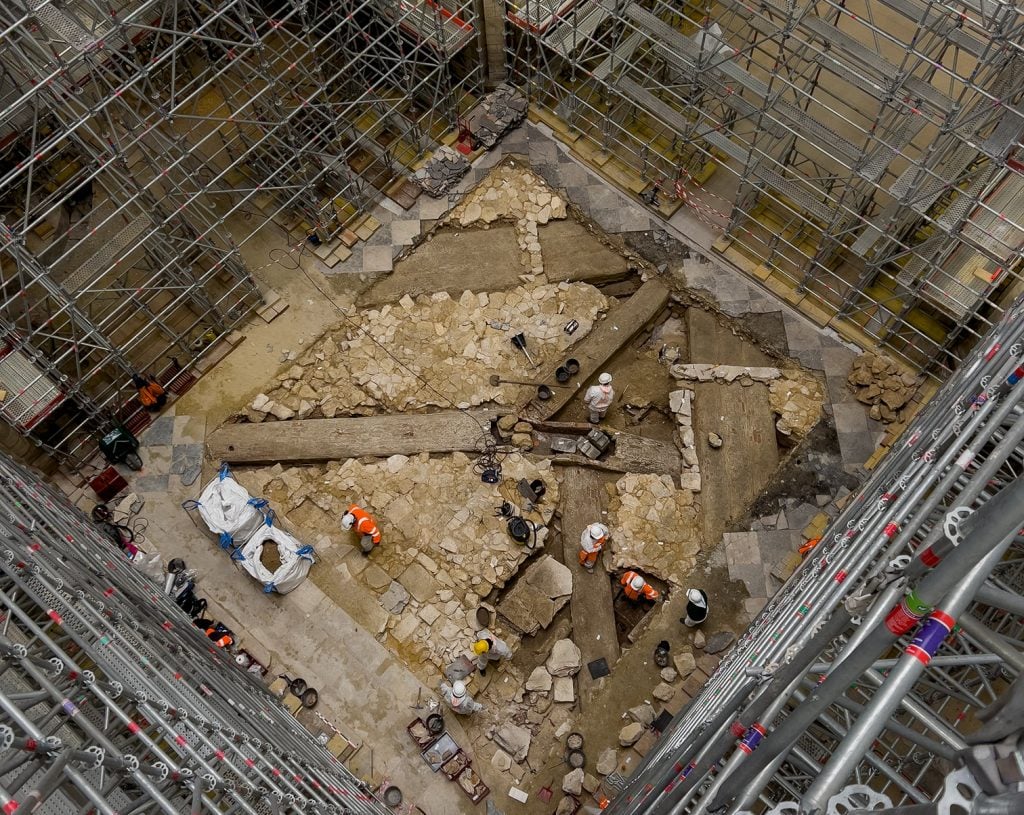
View of the excavation of the transept in Notre-Dame. Photo: Denis Gliksman, Inrap.
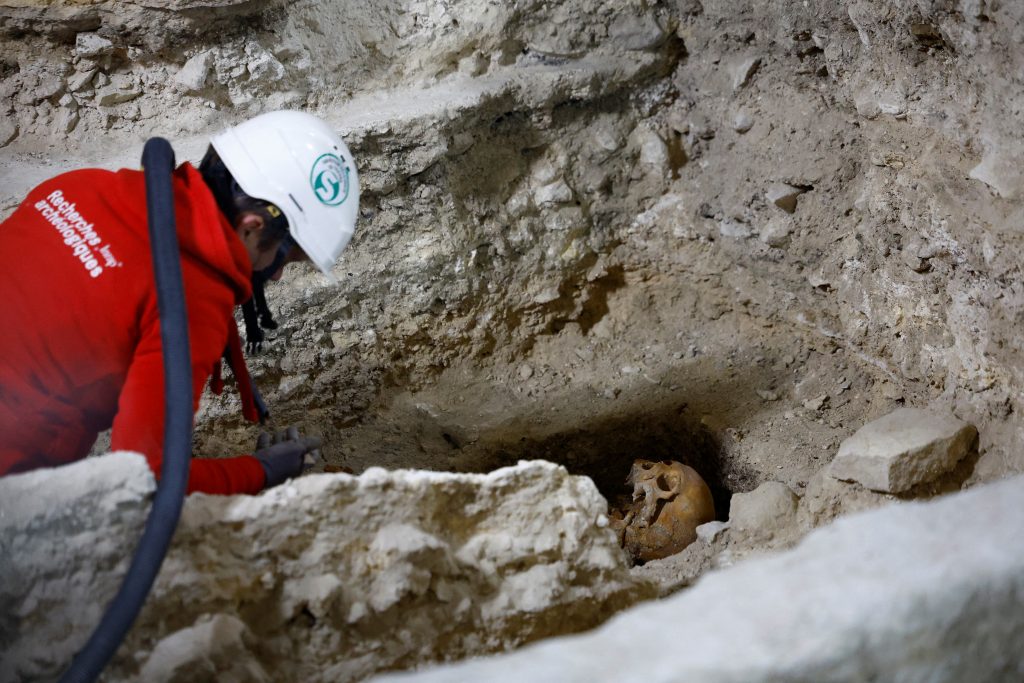
An archaeologist works on a skeleton in a tomb at the burial site discovered in the nave of the Notre-Dame de Paris Cathedral (Photo by SARAH MEYSSONNIER/POOL/AFP via Getty Images)
Analysis on the skeleton revealed a man who had died in his mid-30s and had suffered from tuberculosis and meningitis. It is known that du Bellay, who died in Paris in 1560 aged 37, struggled with ill health during in his final decade and suffered from deafness. Another clue came from the damage to the bone socket of his hips, which pointed to a man who had spent a great deal of time on horseback. It is known du Bellay was distinguished horseman and traveled between Paris and Rome by horse in the 1850s.
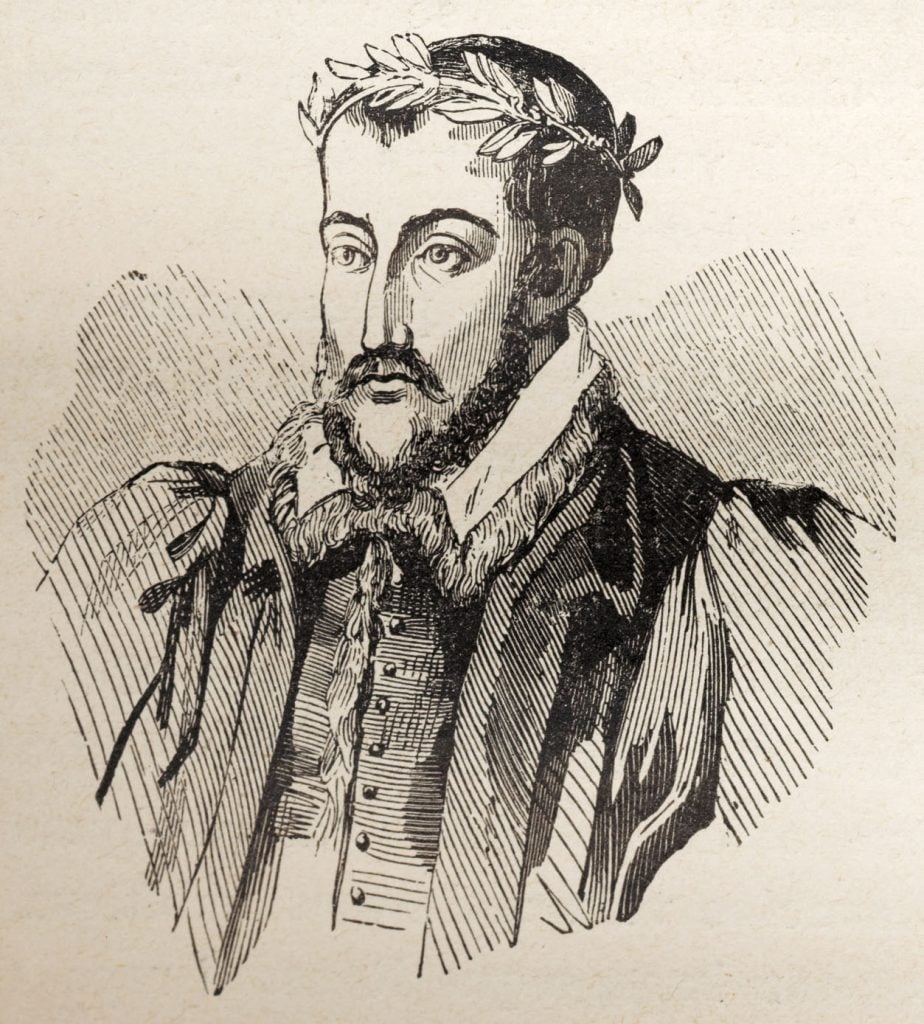
Unknown, Joachim du Bellay (ca. 1550). Photo: Getty Images/Culture Club.
Despite confidence that sarcophagus of the Renaissance poet has been rediscovered, it’s still unknown why the body was buried beneath the transept and not in the side chapel, where Jean du Bellay was interred. Eric Crubézy, a professor who leads the forensic analysis, offered two reasons.
“Either it was a temporary burial that became permanent,” Crubézy said in Inrap’s press release, “or his coffin was transferred as part of another burial in 1568, after the publication of his complete works.” The second hypothesis suggests du Bellay’s posthumous fame led to him being interred in a more prominent area of Notre-Dame.
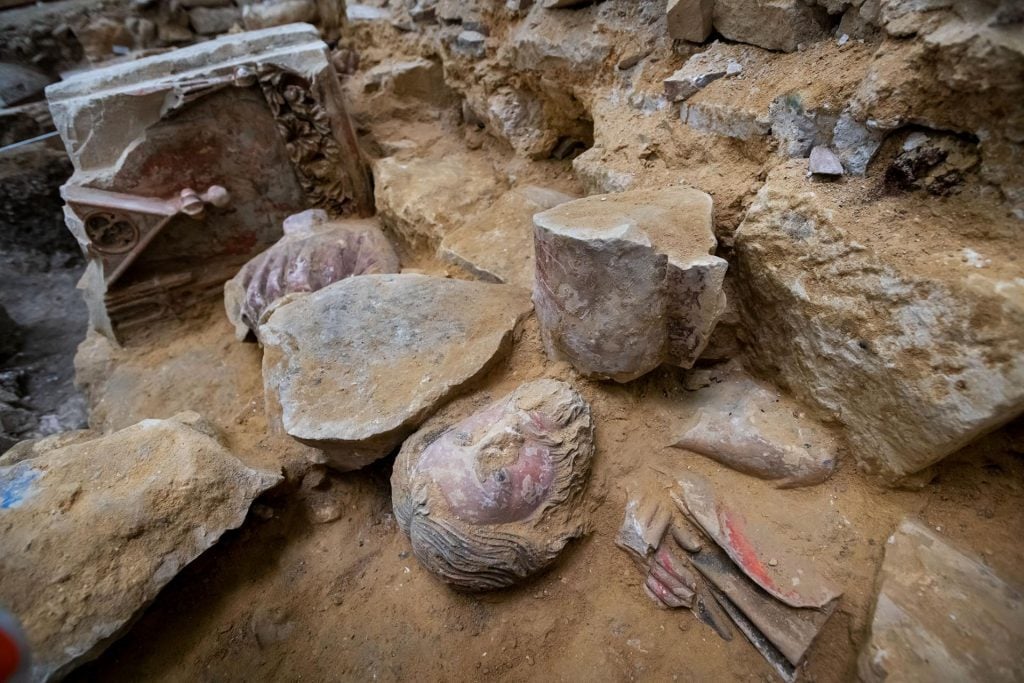
Detail of 13th-century sculpted blocks discovered during restoration work at the Notre-DAme. Photo: © Denis Gliksman, Inrap.
Following the fire that destroyed the cathedral’s roof and spire in April 2019, Inrap archaeologists launched a sweeping restoration project. To date, it has discovered more than 100 graves as well as statues, sculptures, and religious artifacts.
Notre-Dame is set to reopen to the public in December and an exhibition on sculpted pieces from the Cathedral, including those uncovered by Inrap, will open at the Musée de Cluny in November.

The Notre-Dame cathedral undergoing reconstruction, Paris, France, 2024. Photo: Luis Boza/NurPhoto via Getty Images.